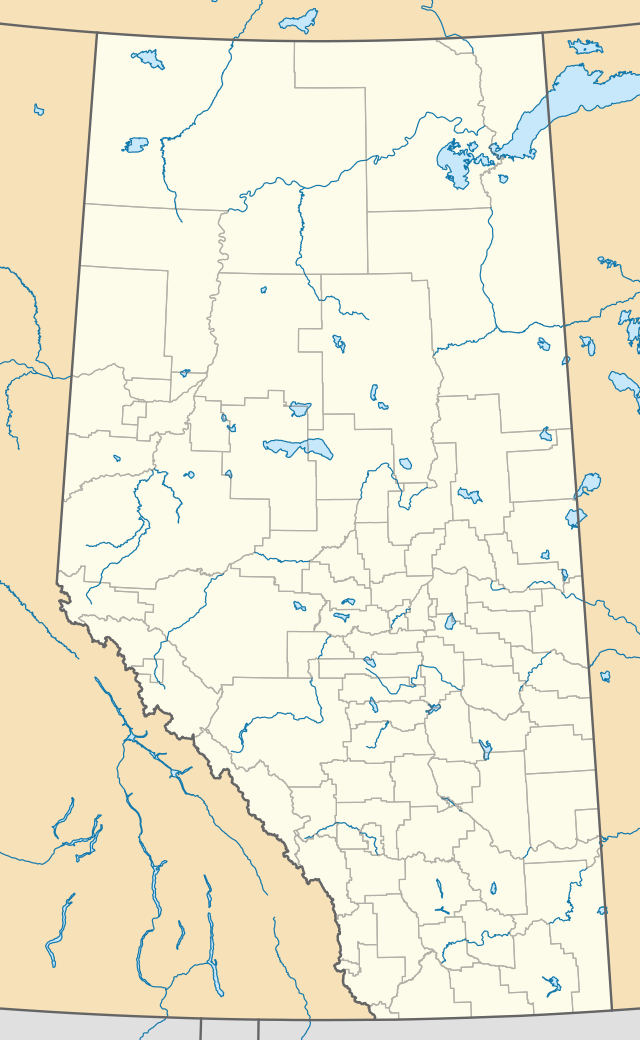Aye Mountain
Aye Mountain is located on the Canadian provincial boundary between Alberta and British Columbia on the Continental Divide. It was named in 1913 by the Interprovincial Boundary Survey.[1][2]
| Aye Mountain | |
|---|---|
 Aye Mountain centered. Eon to left, Assiniboine to right | |
| Highest point | |
| Elevation | 3,236 m (10,617 ft) [1] |
| Prominence | 361 m (1,184 ft) [2] |
| Listing | Mountains of Alberta Mountains of British Columbia |
| Coordinates | 50°50′42″N 115°38′36″W [2] |
| Geography | |
 Aye Mountain Location in Alberta and British Columbia  Aye Mountain Aye Mountain (British Columbia) | |
| Country | Canada |
| Provinces | Alberta and British Columbia |
| Topo map | NTS 82J/13 |
| Climbing | |
| First ascent | 1934 H.S. Crosby, Rudolph Aemmer[1] |
Geology
The mountain is composed of sedimentary rock laid down during the Precambrian to Jurassic periods.[3] Formed in shallow seas, this sedimentary rock was pushed east and over the top of younger rock during the Laramide orogeny.[4]
Climate
Based on the Köppen climate classification, Mount Aye is located in a subarctic climate with cold, snowy winters, and mild summers.[5] Temperatures can drop below −20 C with wind chill factors below −30 C.
References
- "Aye Mountain". PeakFinder.com. Retrieved Feb 13, 2010.
- "Aye Mountain". Bivouac.com. Retrieved Feb 13, 2010.
- Belyea, Helen (1960). The Story of the Mountains in Banff National Park (PDF) (Report). Geological Survey of Canada. Archived (PDF) from the original on 2 October 2015. Retrieved 2019-06-23.
- Gadd, Ben (2008). "Geology of the Rocky Mountains and Columbias". Missing or empty
|url=(help) - Peel, M. C.; Finlayson, B. L. & McMahon, T. A. (2007). "Updated world map of the Köppen−Geiger climate classification". Hydrol. Earth Syst. Sci. 11: 1633–1644. ISSN 1027-5606.
This article is issued from Wikipedia. The text is licensed under Creative Commons - Attribution - Sharealike. Additional terms may apply for the media files.